#Trans Representation
Text
VIVIAN IS UNCENSORED IN THE REMAKE
TRANS WOMEN WILL BE REAL MAY 26TH
HAPPY BIRTHDAY TRANS WOMEN
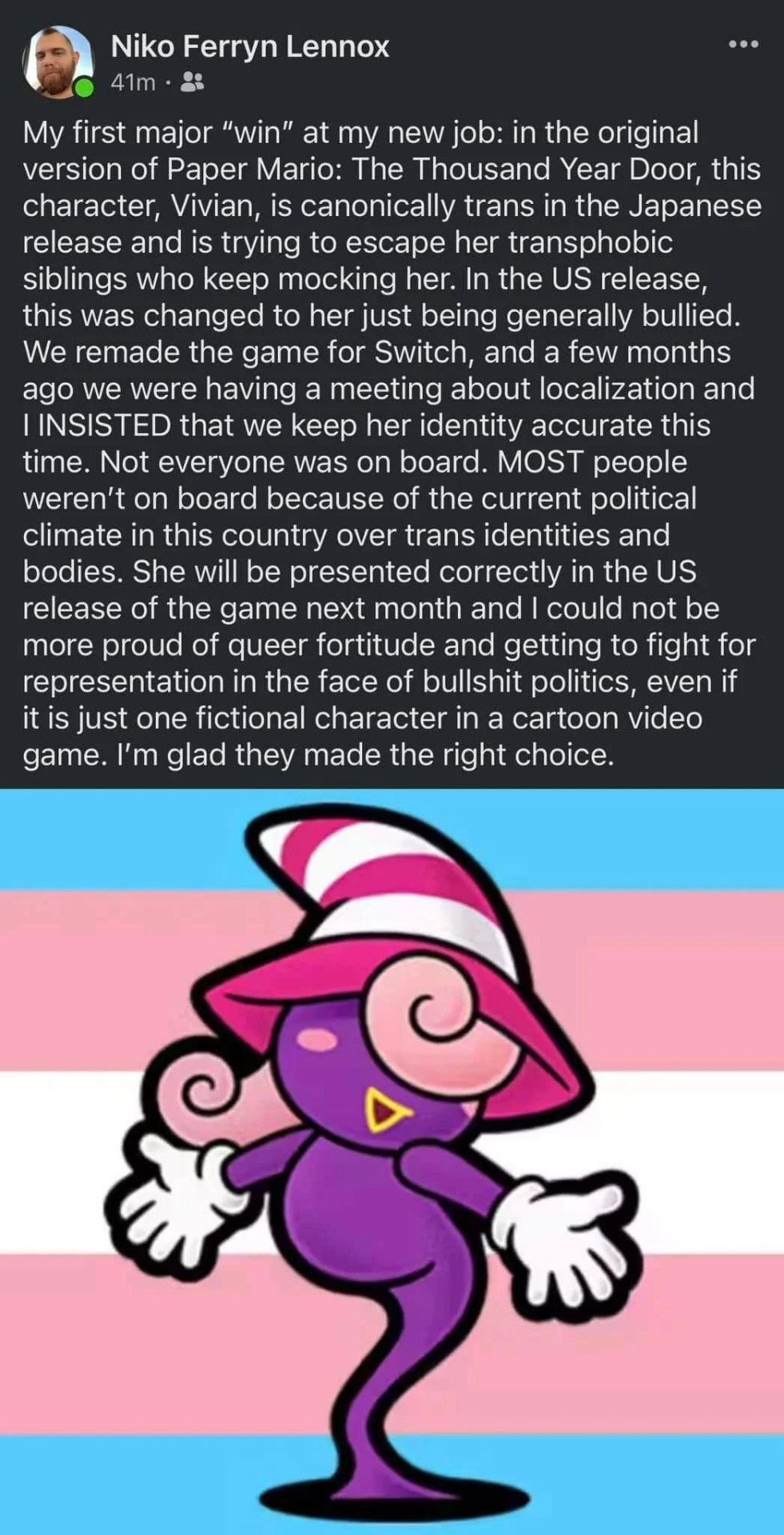
#mario#super mario#super Mario bros#mario movie#paper mario the thousand year door#vivian#vivian paper mario#vivian ttyd#vivian mario#trans#transgender#trans rights#queer#trans representation#video games#gamer#gaymer#ttyd#paper mario ttyd#paper mario tttyd remake#nintendo#bi#bisexual#trans women are beautiful#trans women#trans woman#trans women are amazing#mario and luigi#gay#lesbian
24 notes
·
View notes
Photo

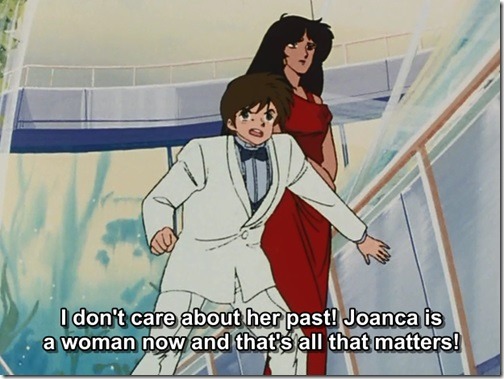
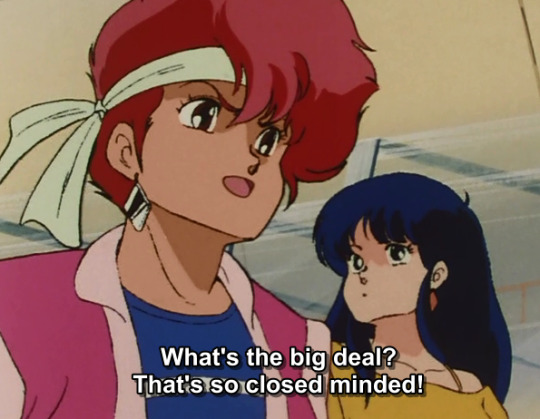

Dirty Pair (1985 anime)
S1:E7 - “Love is Everything. Risk Your Life to Elope!!”
(Watch the clip here)
This mid-80′s anime really said trans rights 🏳️⚧️
And interestingly enough, Joanca was voiced by Masako Katsuki, who would go on to voice another groundbreaking LGBTQ+ character nearly a decade later… Michiru Kaioh/Sailor Neptune!
60K notes
·
View notes
Text
The Forgotten History of the World’s First Transgender Clinic
I finished the first round of edits on my nonfiction history of trans rights today. It will publish with Norton in 2025, but I decided, because I feel so much of my community is here, to provide a bit of the introduction.
[begin sample]
The Institute for Sexual Sciences had offered safe haven to homosexuals and those we today consider transgender for nearly two decades. It had been built on scientific and humanitarian principles established at the end of the 19th century and which blossomed into the sexology of the early 20th. Founded by Magnus Hirschfeld, a Jewish homosexual, the Institute supported tolerance, feminism, diversity, and science. As a result, it became a chief target for Nazi destruction: “It is our pride,” they declared, to strike a blow against the Institute. As for Magnus Hirschfeld, Hitler would label him the “most dangerous Jew in Germany.”6 It was his face Hitler put on his antisemitic propaganda; his likeness that became a target; his bust committed to the flames on the Opernplatz. You have seen the images. You have watched the towering inferno that roared into the night. The burning of Hirschfeld’s library has been immortalized on film reels and in photographs, representative of the Nazi imperative, symbolic of all they would destroy. Yet few remember what they were burning—or why.
Magnus Hirschfeld had built his Institute on powerful ideas, yet in their infancy: that sex and gender characteristics existed upon a vast spectrum, that people could be born this way, and that, as with any other
diversity of nature, these identities should be accepted. He would call them Intermediaries.
Intermediaries carried no stigma and no shame; these sexual and Gender nonconformists had a right to live, a right to thrive. They also had a right to joy. Science would lead the way, but this history unfolds as an interwar thriller—patients and physicians risking their lives to be seen and heard even as Hitler began his rise to power. Many weren’t famous; their lives haven’t been celebrated in fiction or film. Born into a late-nineteenth-century world steeped in the “deep anxieties of men about the shifting work, social roles, and power of men over women,” they came into her own just as sexual science entered the crosshairs of prejudice and hate. The Institute’s own community faced abuse, blackmail, and political machinations; they responded with secret publishing campaigns, leaflet drops, pro-homosexual propaganda, and alignments with rebel factions of Berlin’s literati. They also developed groundbreaking gender affirmation surgeries and the first hormone cocktail for supportive gender therapy.
Nothing like the Institute for Sexual Sciences had ever existed before it opened its doors—and despite a hundred years of progress, there has been nothing like it since. Retrieving this tale has been an exercise in pursuing history at its edges and fringes, in ephemera and letters, in medal texts, in translations. Understanding why it became such a target for hatred tells us everything about our present moment, about a world that has not made peace with difference, that still refuses the light of scientific evidence most especially as it concerns sexual and reproductive rights.
[end sample]
I wanted to add a note here: so many people have come together to make this possible. Like Ralf Dose of the Magnus-Hirschfeld-Gesellschaft (Magnus Hirschfeld Archive), Berlin, and Erin Reed, American journalist and transgender rights activist—Katie Sutton, Heike Bauer. I am also deeply indebted to historian, filmmaker and formative theorist Susan Stryker for
her feedback, scholarship, and encouragement all along the way. And Laura Helmuth, editor of Scientific American, whose enthusiasm for a short article helped bring the book into being. So many LGBTQ+ historians, archivists, librarians, and activists made the work possible, that its publication testifies to the power of the queer community and its dedication to preserving and celebrating history. But I ALSO want to mention you, folks here on tumblr who have watched and encouraged and supported over the 18 months it took to write it (among other books and projects). @neil-gaiman has been especially wonderful, and @always-coffee too: thank you.
The support of this community has been important as I’ve faced backlash in other quarters. Thank you, all.
NOTE: they are attempting to rebuild the lost library, and you can help: https://magnus-hirschfeld.de/archivzentrum/archive-center/
#support trans rights#trans history#trans#transgender#trans woman#trans rights#trans representation#interwar period#weimar#equality#autistic author#nonbinary#lgbtq representation#lgbtqia#book news#book#books#new books#thank you#neil gaiman#for your support
2K notes
·
View notes
Text
Ruby’s band in the new dw special just casually having a Transfemme lead singer just mmmm….
Yes!
Like sure she’s only a bit part and that kinda sucks but the fact she’s just there casually because RTD has the balls to depict a world where trans people can just exist casually, just…
Yes, yes, yes. More please. It means so much to just SEE people like myself on my favourite show you have no idea. I hope she becomes a regular supporting character.
#thank you rtd#please bring her back in future episodes!!!#PLEASE#doctor who#doctor who christmas special#the church on ruby road#fifteenth doctor#ncuti gatwa#ruby sunday#millie gibson#mary malone#dw#dw spoilers#transgender#trans#trans representation#🏳️⚧️
3K notes
·
View notes
Text
🖤 drop a like if you love me ☺
T girls need love..

#trans gender#trans visibility#trans rights#transgender#mtf trans#trans#trans is sexy#trans is so hot#trans babe#trans beauty#trans liberation#trans lesbian#trans love#trans reader#trans representation#trans pride#trans princess#trans people#trans positivity#trans xie lian#trans sex worker#trans are beautiful#trans exclusionary radical feminist#trans memes#trans content#trans community#trans character#trans vibes#trans voice#trans t4t
2K notes
·
View notes
Text

#transgender#trans rights#trans pride#transgender pride#transgender representation#transgender rights#trans representation#mewtwo#pokemon#memes#quotes#lgbtqia+ positivity#2023
3K notes
·
View notes
Text
HEY YOU!
Yeah, you! Are you trans? Do you like reading books? Or watching movies?
Do you like media about trans men/transmasculine characters but don't know where to find it?
That's sooo crazy because I have this little spreadsheet I'm working on where I'm trying to document all media with protagonists/major characters who are FTM or transmasculine.
The spreadsheet currently has 200+ entries spread across the following categories:
Books
Manga
Memoirs and non-fiction
Movies
TV Shows
Graphic novels / Comics
Webcomics
Audio dramas
Books and movies are also sorted by:
Which character is trans (MC, love interest, antagonist, etc)
If the trans character is POC
The trans character's sexuality (Because I saw lots of transhet guys sad about only being able to find gay romances)
If the author/actor is also trans (if we know for sure)
It's free to use, and free to add to as well! Editing permissions are on, and I check on the spreadsheet every now and then to make sure everything is in order and to clean up.
If you know something that isn't on the list, please add it! You don't have to fill in every single column, but fill it to the best of your abilities.
If you don't want to use the big ass long link below, you can also use: bit.ly/FTM-protags
I made this because I want it to be a community resource. So even if you're not a trans guy or transmasculine person, please reblog!
#my gay little thoughts#ftm#trans#transgender#transmasc#transmasculine#trans community#trans writing#trans art#lgbt#lgbtq#trans books#trans movies#lgbt literature#trans literature#trans media#trans resources#trans representation#nonbinary#queer#ftm spreadsheet
2K notes
·
View notes
Text
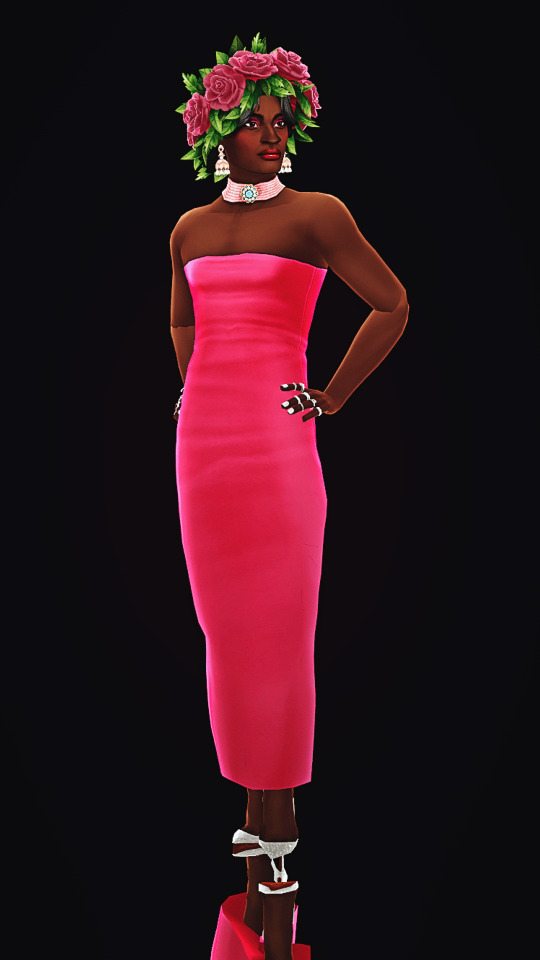


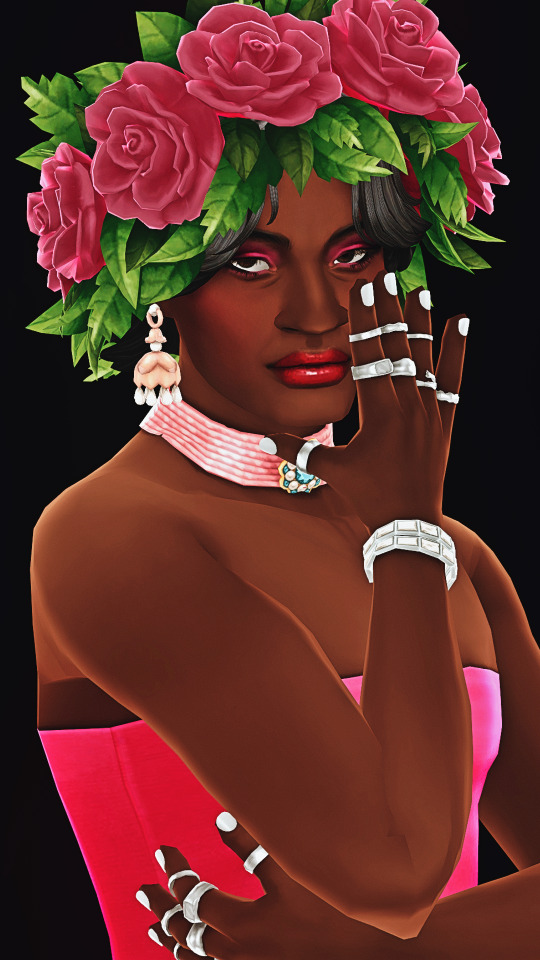

𝘋𝘢𝘺 22: 🌈⚧️💕 𝘙𝘦𝘤𝘳𝘦𝘢𝘵𝘦 𝘢 𝘉𝘭𝘢𝘤𝘬 𝘐𝘤𝘰𝘯: 𝘔𝘢𝘳𝘴𝘩𝘢 𝘗. 𝘑𝘰𝘩𝘯𝘴𝘰𝘯 𝘉𝘏𝘔𝘊𝘈𝘚 𝘊𝘩𝘢𝘭𝘭𝘦𝘯𝘨𝘦
𝘔𝘢𝘳𝘴𝘩𝘢 𝘗. 𝘑𝘰𝘩𝘯𝘴𝘰𝘯, 𝘢 𝘱𝘪𝘰𝘯𝘦𝘦𝘳𝘪𝘯𝘨 𝘵𝘳𝘢𝘯𝘴𝘨𝘦𝘯𝘥𝘦𝘳 𝘢𝘤𝘵𝘪𝘷𝘪𝘴𝘵, 𝘱𝘭𝘢𝘺𝘦𝘥 𝘢 𝘱𝘪𝘷𝘰𝘵𝘢𝘭 𝘳𝘰𝘭𝘦 𝘪𝘯 𝘵𝘩𝘦 𝘦𝘢𝘳𝘭𝘺 𝘓𝘎𝘉𝘛𝘘+ 𝘳𝘪𝘨𝘩𝘵𝘴 𝘮𝘰𝘷𝘦𝘮𝘦𝘯𝘵 𝘪𝘯 𝘵𝘩𝘦 𝘜𝘯𝘪𝘵𝘦𝘥 𝘚𝘵𝘢𝘵𝘦𝘴. 𝘉𝘰𝘳𝘯 𝘰𝘯 𝘈𝘶𝘨𝘶𝘴𝘵 24, 1945, 𝘑𝘰𝘩𝘯𝘴𝘰𝘯 𝘣𝘦𝘤𝘢𝘮𝘦 𝘢 𝘱𝘳𝘰𝘮𝘪𝘯𝘦𝘯𝘵 𝘧𝘪𝘨𝘶𝘳𝘦 𝘪𝘯 𝘵𝘩𝘦 𝘧𝘪𝘨𝘩𝘵 𝘧𝘰𝘳 𝘓𝘎𝘉𝘛𝘘+ 𝘳𝘪𝘨𝘩𝘵𝘴, 𝘱𝘢𝘳𝘵𝘪𝘤𝘶𝘭𝘢𝘳𝘭𝘺 𝘢𝘧𝘵𝘦𝘳 𝘵𝘩𝘦 𝘚𝘵𝘰𝘯𝘦𝘸𝘢𝘭𝘭 𝘶𝘱𝘳𝘪𝘴𝘪𝘯𝘨 𝘪𝘯 1969. 𝘈𝘴 𝘢 𝘉𝘭𝘢𝘤𝘬 𝘵𝘳𝘢𝘯𝘴𝘨𝘦𝘯𝘥𝘦𝘳 𝘸𝘰𝘮𝘢𝘯, 𝘴𝘩𝘦 𝘤𝘰-𝘧𝘰𝘶𝘯𝘥𝘦𝘥 𝘵𝘩𝘦 𝘎𝘢𝘺 𝘓𝘪𝘣𝘦𝘳𝘢𝘵𝘪𝘰𝘯 𝘍𝘳𝘰𝘯𝘵 𝘢𝘯𝘥 𝘵𝘩𝘦 𝘚𝘵𝘳𝘦𝘦𝘵 𝘛𝘳𝘢𝘯𝘴𝘷𝘦𝘴𝘵𝘪𝘵𝘦 𝘈𝘤𝘵𝘪𝘰𝘯 𝘙𝘦𝘷𝘰𝘭𝘶𝘵𝘪𝘰𝘯𝘢𝘳𝘪𝘦𝘴 (𝘚𝘛𝘈𝘙) 𝘸𝘪𝘵𝘩 𝘚𝘺𝘭𝘷𝘪𝘢 𝘙𝘪𝘷𝘦𝘳𝘢, 𝘢𝘪𝘮𝘪𝘯𝘨 𝘵𝘰 𝘢𝘥𝘷𝘰𝘤𝘢𝘵𝘦 𝘧𝘰𝘳 𝘵𝘩𝘦 𝘳𝘪𝘨𝘩𝘵𝘴 𝘢𝘯𝘥 𝘸𝘦𝘭𝘭-𝘣𝘦𝘪𝘯𝘨 𝘰𝘧 𝘵𝘳𝘢𝘯𝘴𝘨𝘦𝘯𝘥𝘦𝘳 𝘢𝘯𝘥 𝘩𝘰𝘮𝘦𝘭𝘦𝘴𝘴 𝘪𝘯𝘥𝘪𝘷𝘪𝘥𝘶𝘢𝘭𝘴. 𝘑𝘰𝘩𝘯𝘴𝘰𝘯'𝘴 𝘢𝘤𝘵𝘪𝘷𝘪𝘴𝘮 𝘦𝘹𝘵𝘦𝘯𝘥𝘦𝘥 𝘣𝘦𝘺𝘰𝘯𝘥 𝘵𝘩𝘦 𝘨𝘢𝘺 𝘳𝘪𝘨𝘩𝘵𝘴 𝘮𝘰𝘷𝘦𝘮𝘦𝘯𝘵, 𝘢𝘥𝘥𝘳𝘦𝘴𝘴𝘪𝘯𝘨 𝘪𝘴𝘴𝘶𝘦𝘴 𝘰𝘧 𝘴𝘺𝘴𝘵𝘦𝘮𝘪𝘤 𝘥𝘪𝘴𝘤𝘳𝘪𝘮𝘪𝘯𝘢𝘵𝘪𝘰𝘯 𝘢𝘯𝘥 𝘱𝘰𝘷𝘦𝘳𝘵𝘺. 𝘏𝘦𝘳 𝘭𝘦𝘨𝘢𝘤𝘺 𝘤𝘰𝘯𝘵𝘪𝘯𝘶𝘦𝘴 𝘵𝘰 𝘪𝘯𝘴𝘱𝘪𝘳𝘦 𝘢𝘯𝘥 𝘪𝘴 𝘤𝘦𝘭𝘦𝘣𝘳𝘢𝘵𝘦𝘥 𝘢𝘯𝘯𝘶𝘢𝘭𝘭𝘺 𝘥𝘶𝘳𝘪𝘯𝘨 𝘗𝘳𝘪𝘥𝘦 𝘔𝘰𝘯𝘵𝘩 𝘢𝘴 𝘢 𝘴𝘺𝘮𝘣𝘰𝘭 𝘰𝘧 𝘳𝘦𝘴𝘪𝘭𝘪𝘦𝘯𝘤𝘦, 𝘤𝘰𝘶𝘳𝘢𝘨𝘦, 𝘢𝘯𝘥 𝘵𝘩𝘦 𝘰𝘯𝘨𝘰𝘪𝘯𝘨 𝘴𝘵𝘳𝘶𝘨𝘨𝘭𝘦 𝘧𝘰𝘳 𝘦𝘲𝘶𝘢𝘭𝘪𝘵𝘺 𝘸𝘪𝘵𝘩𝘪𝘯 𝘵𝘩𝘦 𝘓𝘎𝘉𝘛𝘘+ 𝘤𝘰𝘮𝘮𝘶𝘯𝘪𝘵𝘺. 𝘛𝘳𝘢𝘨𝘪𝘤𝘢𝘭𝘭𝘺, 𝘑𝘰𝘩𝘯𝘴𝘰𝘯'𝘴 𝘭𝘪𝘧𝘦 𝘸𝘢𝘴 𝘤𝘶𝘵 𝘴𝘩𝘰𝘳𝘵 𝘪𝘯 1992 𝘸𝘩𝘦𝘯 𝘴𝘩𝘦 𝘸𝘢𝘴 𝘧𝘰𝘶𝘯𝘥 𝘧𝘭𝘰𝘢𝘵𝘪𝘯𝘨 𝘪𝘯 𝘵𝘩𝘦 𝘏𝘶𝘥𝘴𝘰𝘯 𝘙𝘪𝘷𝘦𝘳, 𝘣𝘶𝘵 𝘩𝘦𝘳 𝘪𝘮𝘱𝘢𝘤𝘵 𝘦𝘯𝘥𝘶𝘳𝘦𝘴, 𝘢𝘯𝘥 𝘴𝘩𝘦 𝘪𝘴 𝘳𝘦𝘮𝘦𝘮𝘣𝘦𝘳𝘦𝘥 𝘢𝘴 𝘢 𝘵𝘳𝘢𝘪𝘭𝘣𝘭𝘢𝘻𝘦𝘳 𝘪𝘯 𝘵𝘩𝘦 𝘧𝘪𝘨𝘩𝘵 𝘧𝘰𝘳 𝘵𝘳𝘢𝘯𝘴𝘨𝘦𝘯𝘥𝘦𝘳 𝘳𝘪𝘨𝘩𝘵𝘴 𝘢𝘯𝘥 𝘴𝘰𝘤𝘪𝘢𝘭 𝘫𝘶𝘴𝘵𝘪𝘤𝘦.
#westonsims00#thesims4#ts4#mysims#showusyoursims#myscreenshots#simblr#bhmcas#trans representation#trans rights#marsha p johnson#lgbtq#tw death#please stop killing us#please stop with the anti-trans rhetoric#please stop denying us rights#please...just stop#human rights
901 notes
·
View notes
Text

Happy Trans Visibility Week everyone from the Prettiest Platypus!
#prettyplaty#trans#transgender#trans awareness#trans is beautiful#trans rights#human rights#trans representation#webtoon#webcomic
1K notes
·
View notes
Text

I don't feel like drawing anything new today, so here's an oldie from 2019 😅
#furry art#comic strip#drawing#cartooning#angelofalls#trans representation#transmasc#trans men#transgender day of visibility
597 notes
·
View notes
Text
No because Tao’s mom being so excited for Tao and Elle to be dating is such an important moment. Like she is excited for her bby, yes. She is excited that her bby and her bbys childhood bff are dating, yes. But she also has known Elle since pre transitioning and Tao’s mom LOVES Elle. She’s loved Elle since S1. And now she’s so excited to tell EVERYONE about Tao and Elle. To her, Elle is the best thing that could happen to her son. And I’m gonna go cry now 💕
#heartstopper#heartstopper netflix#heartstopper season 2#Tao xu#elle argent#transisbeautiful#trans love#trans representation
1K notes
·
View notes
Text

t4t <3
#gender#gender envy#lgbt#queer#trans#trans representation#transgender#transition goals#lgbtqia#mario#princess peach#t4t
551 notes
·
View notes
Text
Can I just take a moment to give a big shoutout to Neil, Pterry and the team for REPRESENTATION!
It’s so natural in the show that we almost take it for granted. But in this world, we see characters of every race, every gender, every sex, every sexuality, every ability as if it’s the most normal thing in the world. Women have agency. Sex workers are treated with respect. Hooligans use Grindr. Middle-aged+ people are sexy. No-one ever jeers or laughs or demeans someone for what they ARE, just how they’re behaving.
And with a couple of exceptions, these characters aren’t the Hollywood ideal of beauty, but they ARE all beautiful in their own unique ways. Even demons and zombies with rotting faces and mouths full of flies. Everyone just shines from inside out.
#good omens#go2#neil gaiman#terry pratchett#lgbt representation#queer representation#black representation#disability representation#feminist#trans representation#representation matters
1K notes
·
View notes
Text
Can I show you what’s underneath? 🍆
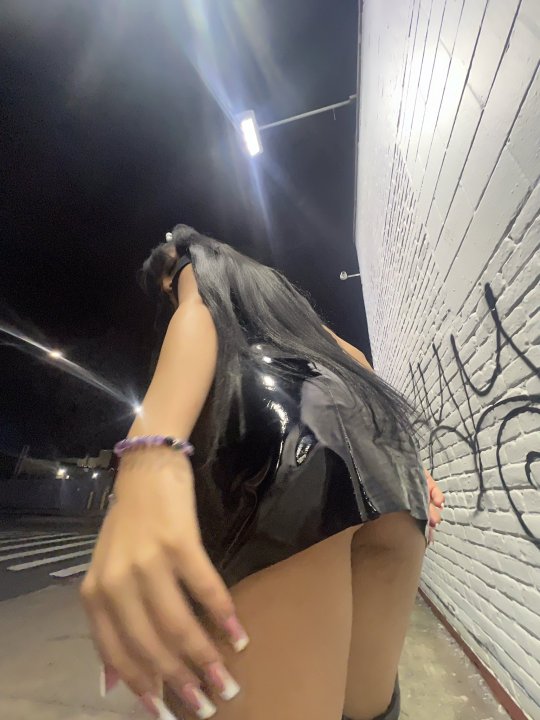
#suck my ass#transgender#trans girl#transgenresworld#trans pride#trans is beautiful#trans is not a crime#trans liberation#trans are women#trans rights#trans representation#trans fashion#trans dd/lb#trans voice#trans memes#trans gay#trans community#trans is sexy#trans is so hot#sucker punch#trans selfie#trans are beautiful#trans fiction#trans visibility#trans beauty#trans bottom#trans man#trans vent#people suck#suck my balls
479 notes
·
View notes
Text
In addition to my Monkey Man post from earlier, the always kind & sweet Aparna Verma (author of The Phoenix King, check it out) asked that I do a thread on Hijras, & more of the history around them, South Asia, mythology (because that's my thing), & the positive inclusion of them in Monkey Man which I brought up in my gushing review.
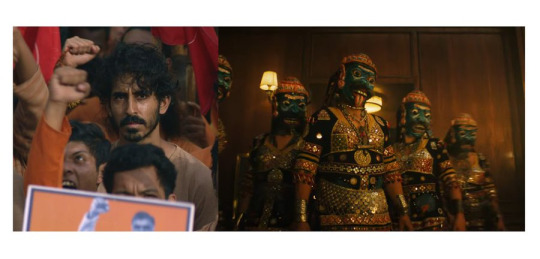
Hijra: They are the transgender, eunuch, or intersex people in India who are officially recognized as the third sex throughout most countries in the Indian subcontinent. The trans community and history in India goes back a long way as being documented and officially recognized - far back as 12th century under the Delhi Sultanate in government records, and further back in our stories in Hinduism. The word itself is a Hindi word that's been roughly translated into English as "eunuch" commonly but it's not exactly accurate.
Hijras have been considered the third sex back in our ancient stories, and by 2014 got official recognition to identify as the third gender (neither male or female) legally. Pakistan, Nepal, Bangladesh, and India have accepted: eunuch, trans, intersex people & granted them the proper identification options on passports and other government official documents.
But let's get into some of the history surrounding the Hijra community (which for the longest time has been nomadic, and a part of India's long, rich, and sometimes, sadly, troubled history of nomadic tribes/people who have suffered a lot over the ages. Hijras and intersex people are mentioned as far back as in the Kama Sutra, as well as in the early writings of Manu Smriti in the 1st century CE (Common Era), specifically said that a third sex can exist if possessing equal male and female seed.
This concept of balancing male/female energies, seed, and halves is seen in two places in South Asian mythos/culture and connected to the Hijra history.
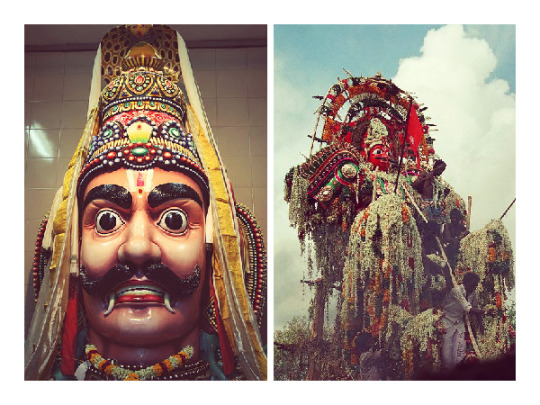
First, we have Aravan/Iravan (romanized) - who is also the patron deity of the transgender community. He is most commonly seen as a minor/village deity and is depicted in the Indian epic Mahabharata. Aravan is portrayed as having a heroic in the story and his self-sacrifice to the goddess Kali earns him a boon.

He requests to be married before his death. But because he is doomed to die so shortly after marriage, no one wants to marry him.
No one except Krishna, who adopts his female form Mohini (one of the legendary temptresses in mythology I've written about before) and marries him. It is through this union of male, and male presenting as female in the female form of Mohini that the seed of the Hijras is said to begun, and why the transgender community often worships Aravan and, another name for the community is Aravani - of/from Aravan.
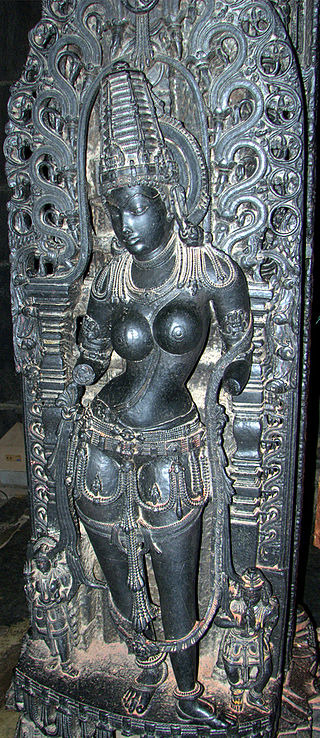
But that's not the only place where a gender non conforming divine representation can be seen. Ardhanarishvara is the half female form of lord Shiva, the destroyer god.
Shiva combines with his consort Parvarti and creates a form that represents the balancing/union between male/female energies and physically as a perfectly split down the middle half-male half-female being. This duality in nature has long been part of South Asian culture, spiritual and philosophical beliefs, and it must be noted the sexuality/gender has often been displayed as fluid in South Asian epics and the stories. It's nothing new.

Many celestial or cosmic level beings have expressed this, and defied modern western limiting beliefs on the ideas of these themes/possibilities/forms of existence.
Ardhanarishvara signifies "totality that lies beyond duality", "bi-unity of male and female in God" and "the bisexuality and therefore the non-duality" of the Supreme Being.
Back to the Hijra community.
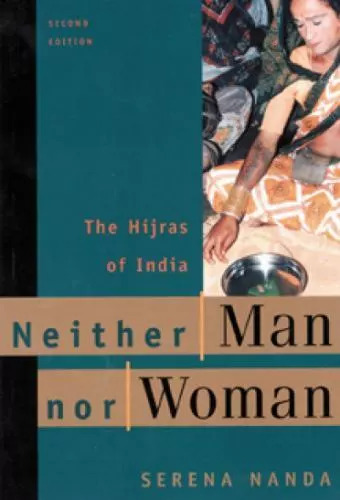
They have a complex and long history. Throughout time, and as commented on in the movie, Monkey Man, the Hijra community has faced ostracization, but also been incorporated into mainstream society there. During the time of the Dehli Sultanate and then later the Mughal Empire, Hijras actually served in the military and as military commanders in some records, they were also servants for wealthy households, manual laborers, political guardians, and it was seen as wise to put women under the protection of Hijras -- they often specifically served as the bodyguards and overseers of harems. A princess might be appointed a Hijra warrior to guard her.

But by the time of British colonialism, anti-Hijra laws began to come in place folded into laws against the many nomadic tribes of India (also shown in part in Monkey Man with Kid (portrayed by Dev Patel) and his family, who are possibly
one of those nomadic tribes that participated in early theater - sadly by caste often treated horribly and relegated to only the performing arts to make money (this is a guess based on the village play they were performing as no other details were given about his family).
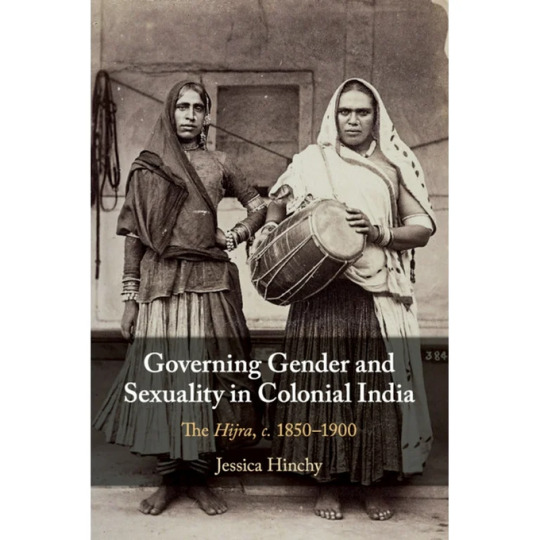
Hijras were criminalized in 1861 by the Indian Penal Code enforced by the British and were labeled specifically as "The Hijra Problem" -- leading to an anti-Hijra campaign across the subcontinent with following laws being enacted: punishing the practices of the Hijra community, and outlawing castration (something many Hijra did to themselves). Though, it should be noted many of the laws were rarely enforced by local Indian officials/officers. But, the British made a point to further the laws against them by later adding the Criminal Tribes Act in 1871, which targeted the Hijra community along with the other nomadic Indian tribes - it subjected them to registration, tracking/monitoring, stripping them of children, and their ability to sequester themselves in their nomadic lifestyle away from the British Colonial Rule.
Today, things have changed and Hijras are being seen once again in a more positive light (though not always and this is something Monkey Man balances by what's happened to the community in a few scenes, and the heroic return/scene with Dev and his warriors). All-hijra communities exist and sort of mirror the western concept of "found families" where they are safe haven/welcoming place trans folks and those identifying as intersex.
These communities also have their own secret language known as Hijra Farsi, which is loosely based on Hindi, but consists of a unique vocabulary of at least 1,000 words.
As noted above, in 2014, the trans community received more legal rights.
Specifically: In April 2014, Justice K. S. Radhakrishnan declared transgender to be the third gender in Indian law in National Legal Services Authority v. Union of India.
Hijras, Eunuchs, apart from binary gender, be treated as "third gender" for the purpose of safeguarding their rights under Part III of our Constitution and the laws made by the Parliament and the State Legislature. Transgender persons' right to decide their self-identified gender is also upheld and the Centre and State Governments are directed to grant legal recognition of their gender identity such as male, female or as third gender.
I've included some screenshots of (some, not all, and certainly not the only/definitive reads) books people can check out about SOME of the history. Not all again. This goes back ages and even our celestial beings/creatures have/do display gender non conforming ways.
There are also films that touch on Hijra history and life. But in regards to Monkey Man, which is what started this thread particularly and being asked to comment - it is a film that positively portrayed India's third sex and normalized it in its depiction. Kid the protagonist encounters a found family of Hijras at one point in the story (no spoilers for plot) and his interactions/acceptance, living with them is just normal. There's no explaining, justifying, anything to/for the audience. It simply is. And, it's a beautiful arc of the story of Kid finding himself in their care/company.
#hijra#trans representation#monkey man#dev patel#transgender#trans rights#trans rights are human rights#third sex#indian history#indian culture#colonialism#imperialism#south Asian mythos#South Asian myths#Aravan#Iravan#Mahabharata#hindu mythology#hindu gods#kali goddess#krishna#hindu mythology art#Ardhanarishvara#Shiva#Parvarti#sexuality#gender fluid#fluid sexuality#trans community#transgender rights
333 notes
·
View notes
Text
being a Discworld fan honestly should be, like, the #1 book recommending a person sort of things, and i hate that it's not because so many of his fans get it so wrong. like. i try not to get incensed about people being wrong on the internet, but how anyone reads these books and thinks this man was a bigot, thinks the representation he put in Discworld was at the expense of those represented, like. like. i'm furious about it. every time. especially as he continued to learn and grow both as a writer and as a person. even stuff that was originally meant to be a little silly, like a female dwarf, he found meant a lot to people, and he learned how to better include that story!
(spoilers ahead for Shepherd's Crown)
he leaned into it in the most loving and respectful way. fucking READ The Shepherd's Crown!!!!! the man found out trans women identified with his character so he learned how to represent them! and then, he wrote Jackrum! AND THEN HE WROTE GEOFFREY!!!!! with his last fucking book he gave us a character who says he doesn't really feel like a man or a woman, just himself, fucking ages before anyone else was writing nonbinary characters! AND HE PUT HIM IN GRANNY WEATHERWAX'S FUCKING COTTAGE Y'ALL! LIKE HAVE YOU THOUGHT ABOUT WHAT THAT MEANS BECAUSE I HAVE SOBBED SO FUCKING MUCH ABOUT IT! (Note that obviously Geoffrey doesn't have/use different language for himself, but that's how he feels and pronouns are not gender.)
thanks to how he handled Cheery and how he went from there, Pratchett included trans representation for ALL of us SO SO SO SO SO LONG before we were on anyone else's radar, and it's honestly so much more respectful than some of the stuff i've seen out there more recently!!!!!
he wasn't perfect, and a lot of social standards have evolved since the earlier Discworld books especially, but he always kept an open mind and listened and tried and grew. and there are people out there insisting he would be this hateful bigot!!!!! i hate them!!!!! let me hire the fucking assassin's guild!!!!!
#GNU TERRY FUCKING PRATCHETT Y'ALL#terry pratchett#gnu terry pratchett#discworld#rant#incensed about people being wrong on the internet#boomers in fb groups make me want to scream#the shepherd's crown#geoffrey swivel#trans representation#book recs#sing-you-fools
696 notes
·
View notes